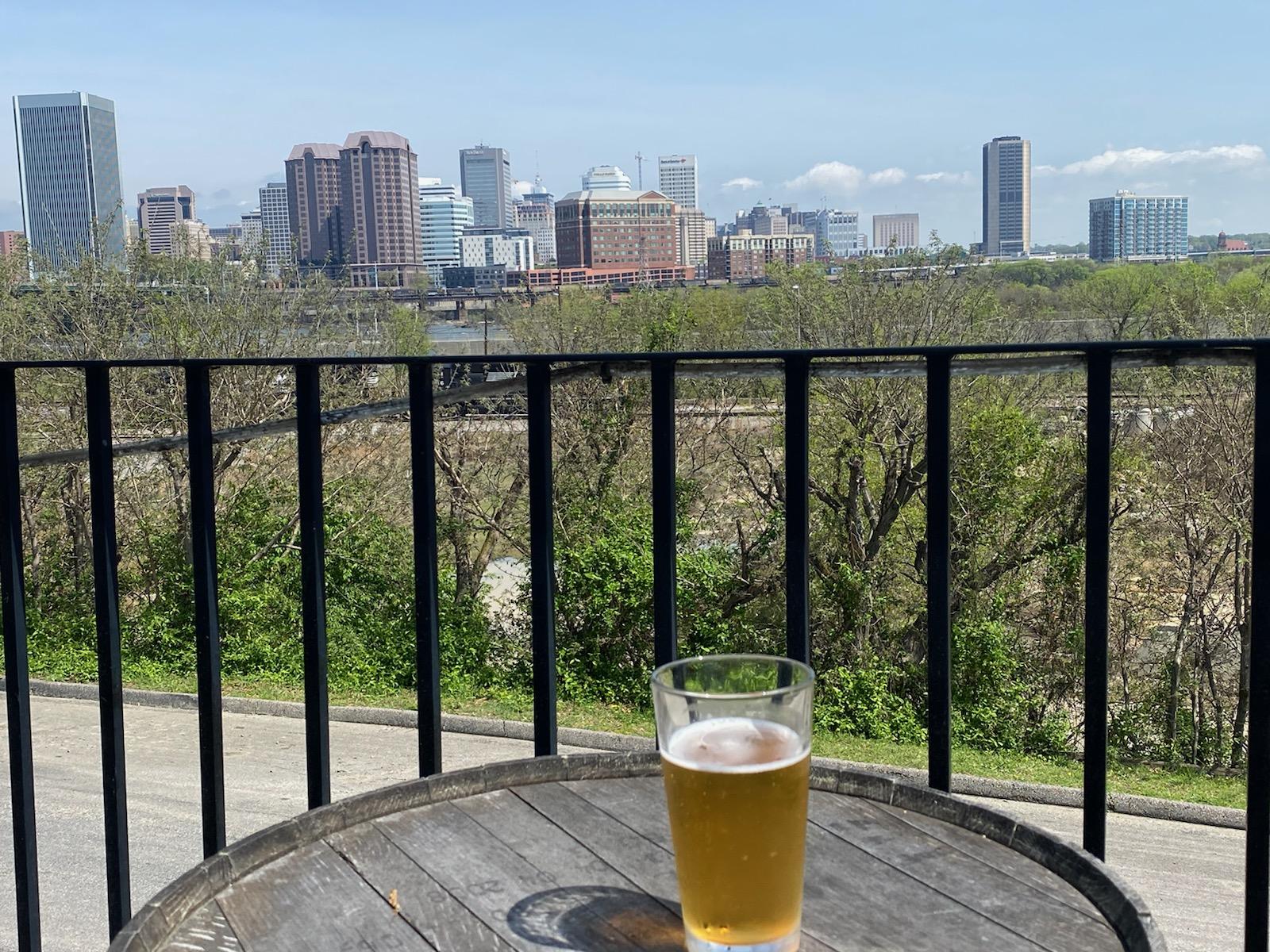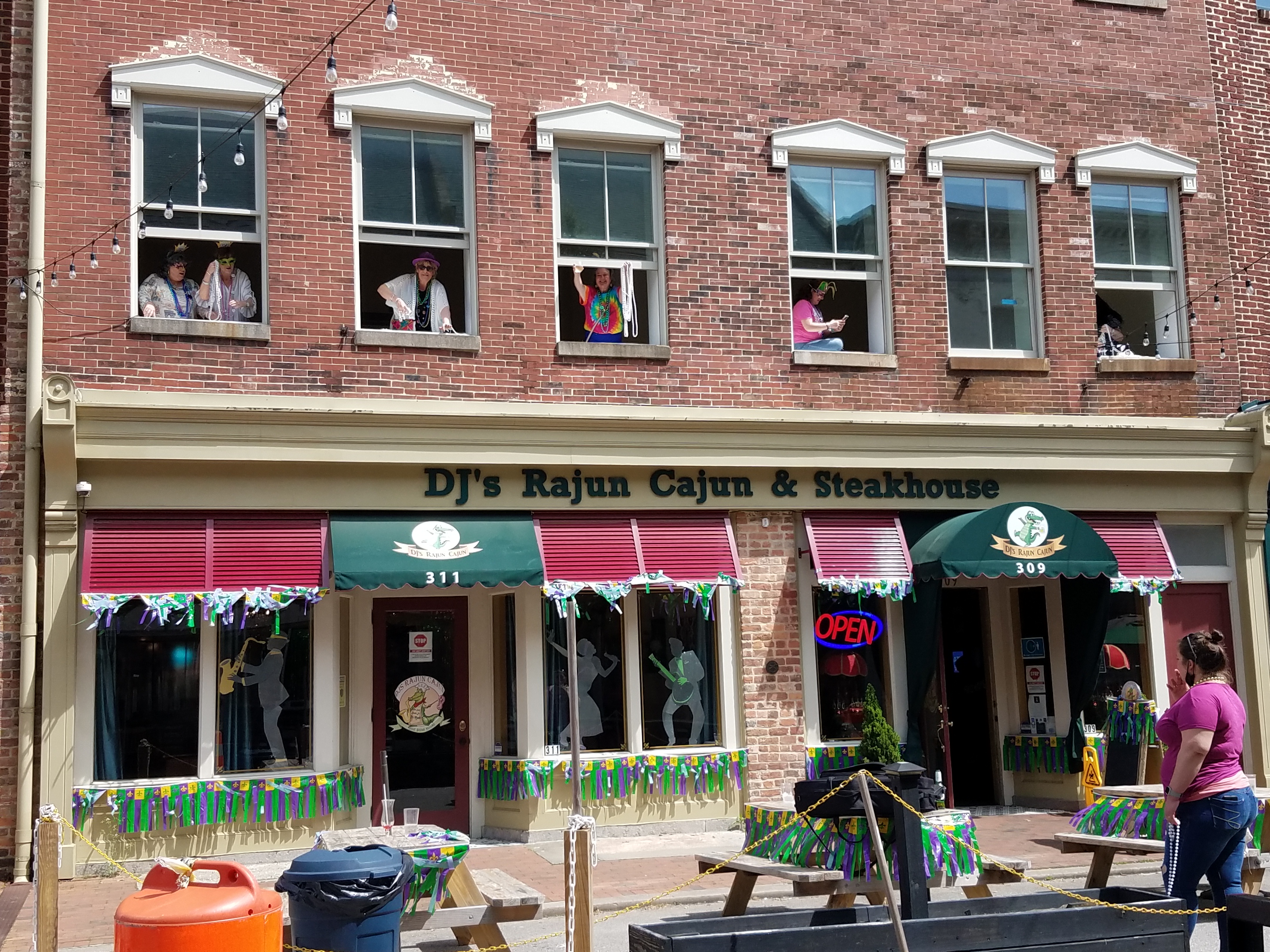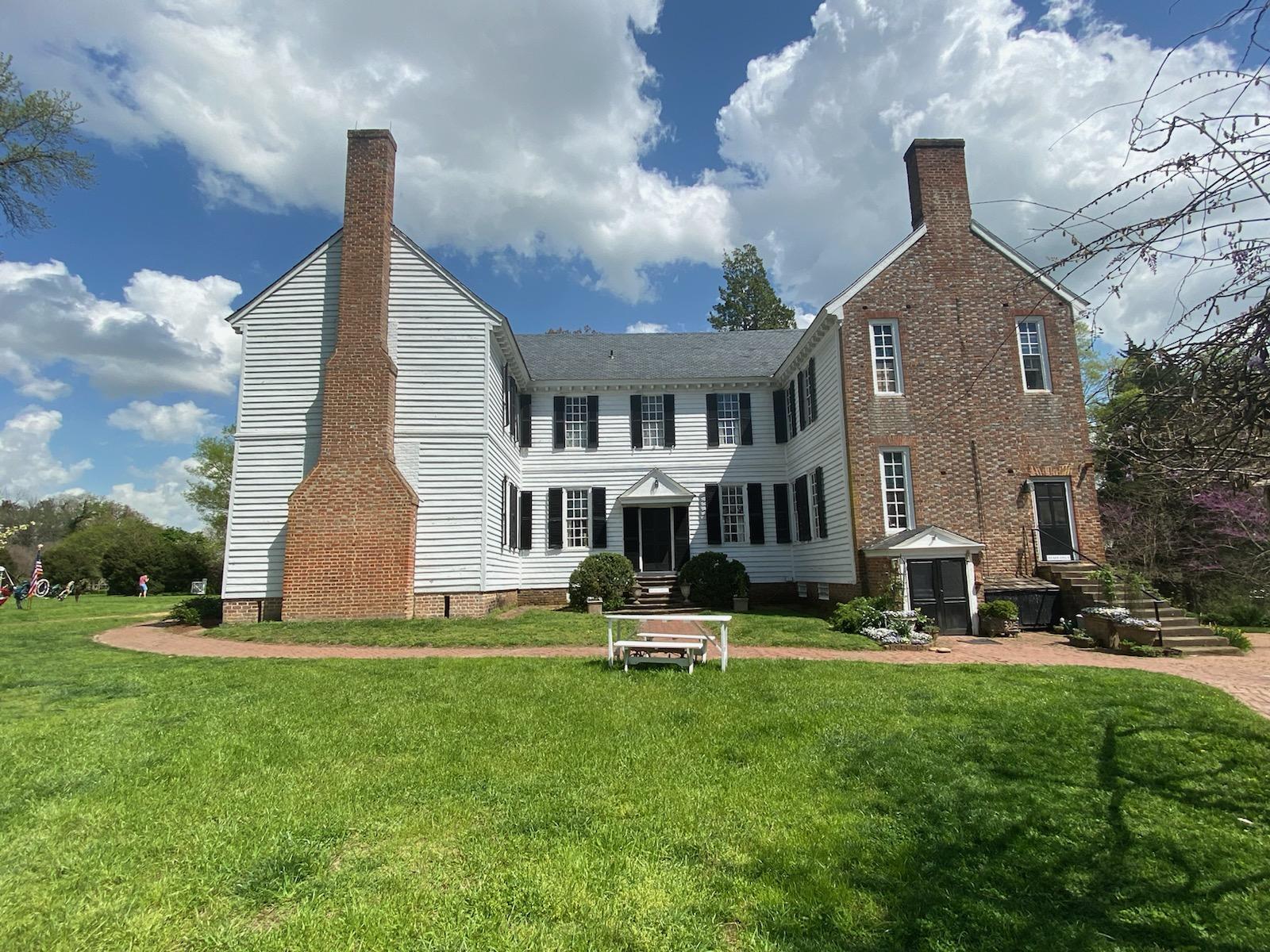The local barley and hops vibe is strong in Richmond. There are over 30 crafters in the metro area. We are working on visiting everyone on this list. We started with Legends because of the view. The food and beer are German inspired flavored. We ordered the smoked wings with 2 dipping sauces and the Wheat American Ale. The flavor has a hint of melon and pear. Come for the hops stay for the view.
Legend is located: 321 W 7th St, Richmond, VA 23224
Our next item in our itinerary was the charming town of Petersburg. There are several antique shops and plenty of local restaurants to grab some nibbles. We went when they were having their annual mardi gras party. My favorite of the antique shops was The Oak Antique Mall. There are several sellers so there is a variety of treasures to be discovered. This town was once a hustling city. During the American Civil War it rank 2nd population for cities in Virginia, and 7th in the confederacy. Today the old town charm still remains.
Just a few blocks from the antique shops is one of the love signs. This one is located on the corner of Jefferson and Washington 201 E Washington Street.
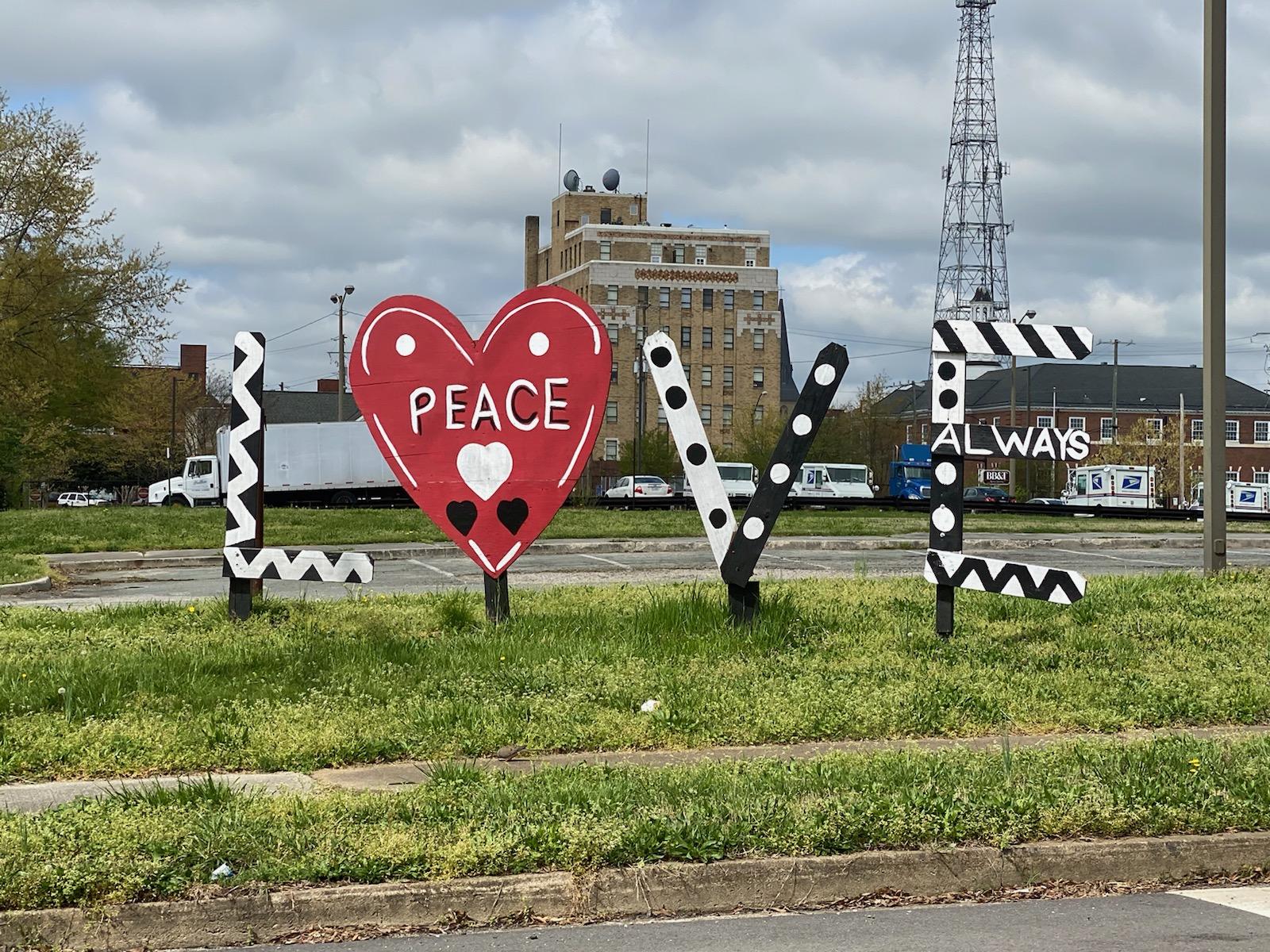
Our next stop was this love sign located at 4100 Oaklawn Blvd Hopewell, VA 23860. If anyone is looking for a fun covid roadtrip activity, drive around to the different love signs. The state is full of these creative pieces of art to remind us that Virginia is for lovers. This is the map for all the signs. You can read more about the initiative.
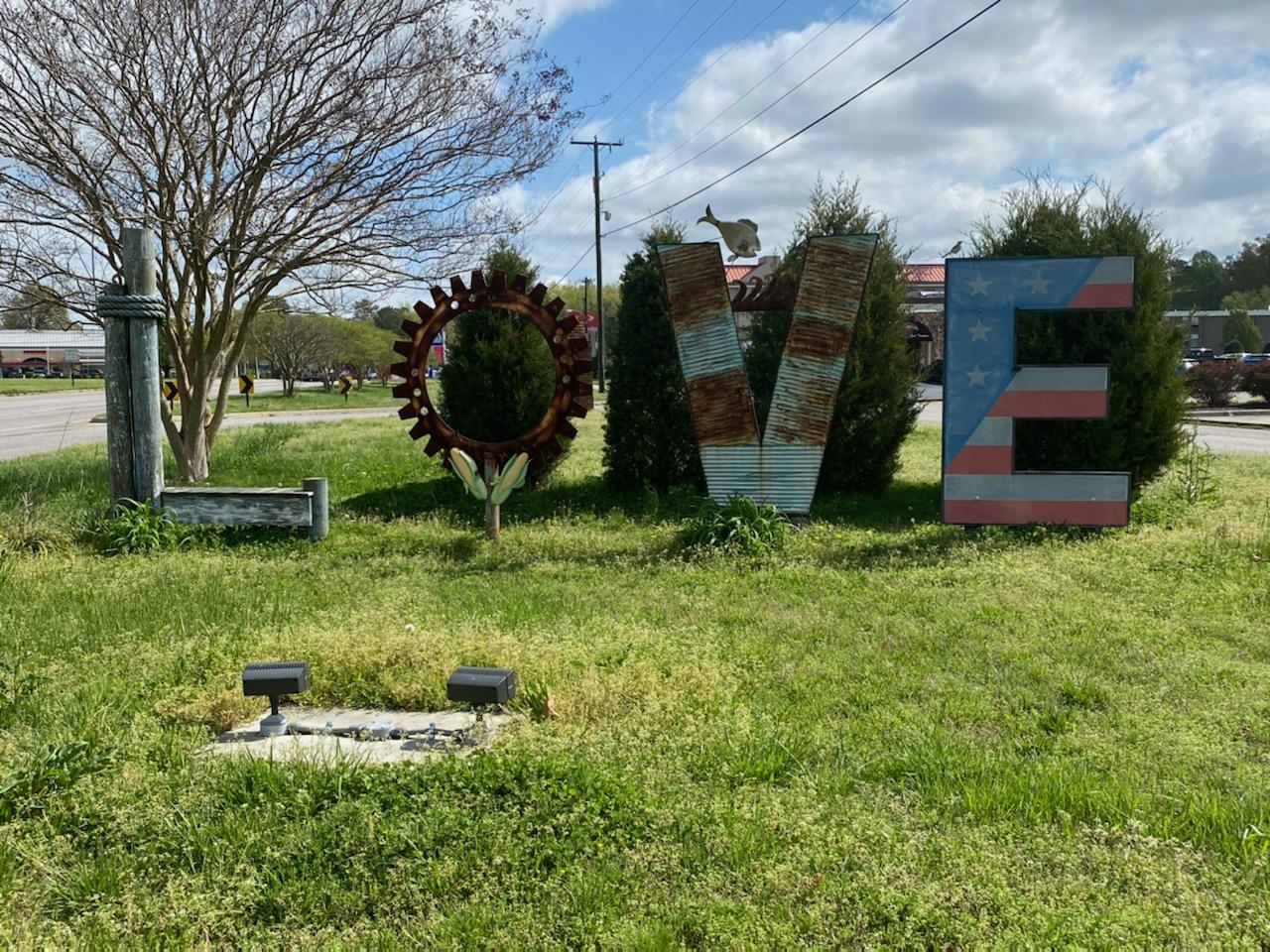
Our last adventure of the day was to visit the Tuckahoe Plantation. Tuckahoe was built by the Randolph family between 1730 and 1740. The Randolph family had an enormous influence in shaping the habits customs and politics of both the colony and the nation. Tuckahoe is the only early Randolph home still standing on its original site.
The mansion was built in the era of great plantations in Virginia, during the 17th and 18th centuries. There were few towns or cities in the colony, therefore, plantations developed as economically and geographically independent entities. At its height, Tuckahoe consisted of 25,000 acres that farmed tobacco, livestock, and wheat with three mills on the property.
The Tuckahoe house was constructed in two sections. The North end of the house was built first in 1733, and the center hall and south wing followed by about 1740 giving Tuckahoe its unique H-frame construction. Original outbuildings along Plantation Street, which include Quarters for the enslaved people there, the Old Kitchen, and more, make Tuckahoe one of the most complete early 18th century plantation layouts in North America. “Thomas of Tuckahoe”, one of the sons of William and Mary Randolph of Turkey Island, first settled Tuckahoe’s site in 1714. It was Thomas’s son, William, who is credited with building the mansion as we see it today. William Randolph and Maria Judith Page started their family at Tuckahoe in the 1730’s. By 1745 their three children were orphaned at Tuckahoe after the untimely death of both parents.
Before his death in 1745 William ensured that his children would be cared for and educated at home should he die. In his will, he named his good friend, Peter Jefferson and cousin Jane Randolph Jefferson, guardians of his children. After William Randolph’s death, Peter and Jane Jefferson moved to Tuckahoe with their children, including two-year-old Thomas, to care for the plantation and the Randolph children and stayed until 1752 when the young Thomas Mann Randolph came of age. source
